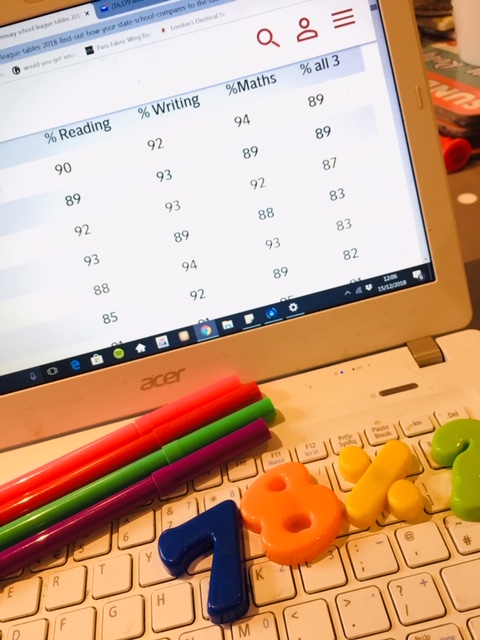Last month saw the annual publication of the (state) primary school league tables. Schools are well-aware of what this means for them, but what does it mean for parents? Bella Learning talks you through the maths (and the reading and the writing…)
What do they measure?
The primary school league tables are based purely on the results of the Key Stage Two SATS in reading, writing and maths. Ten and eleven-year-olds sit tests in reading and maths in their final year at primary school. These tests are designed to measure whether or not the child has met the ‘expected standard’ for their age. Writing is assessed by the teacher through looking at a range of work.
What does that mean?
What most league tables (like this one) are interested in, is the percentage of pupils who reached the expected standard in reading, writing and maths combined. In short, it tells you how many children are competent readers, writers and mathematicians and are ‘ready’ for secondary school.
What is a ‘good’ score?
The government sets the floor standard at 65% so schools falling below this figure in the combined score are said to be ‘under-performing’. Broadly speaking, if your child’s school has a percentage between 80% and 60% they are probably doing okay. Above that is great (and one would hope that other subjects weren’t pushed out to achieve this) and anything below the 50% mark might indicate a problem. If there are no results, it may be that the school is pending an investigation.
What don’t they tell you?
Publishers of the league tables would like to have you believe that the higher the percentage, the better the school. However, what the league tables don’t tell you is how emotionally intelligent the children are, how many pupils flourish in creativity or sports or how many pupils are clever – just not in tests. They don’t tell you whether the pupils that didn’t ‘make’ it have special educational needs, have just arrived from another country or had a bad day. So take what you read with a pinch of salt, and go with your gut feeling of a school. ‘Better’ doesn’t always mean better for your child.
If you are interested in finding out more about primary school, subscribe to our newsletter or check out our guide to Primary School Jargon

